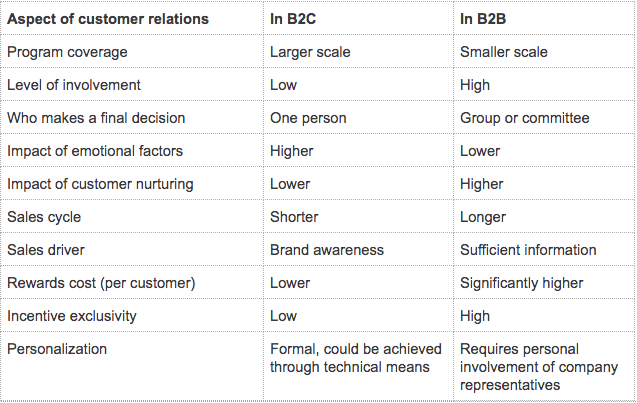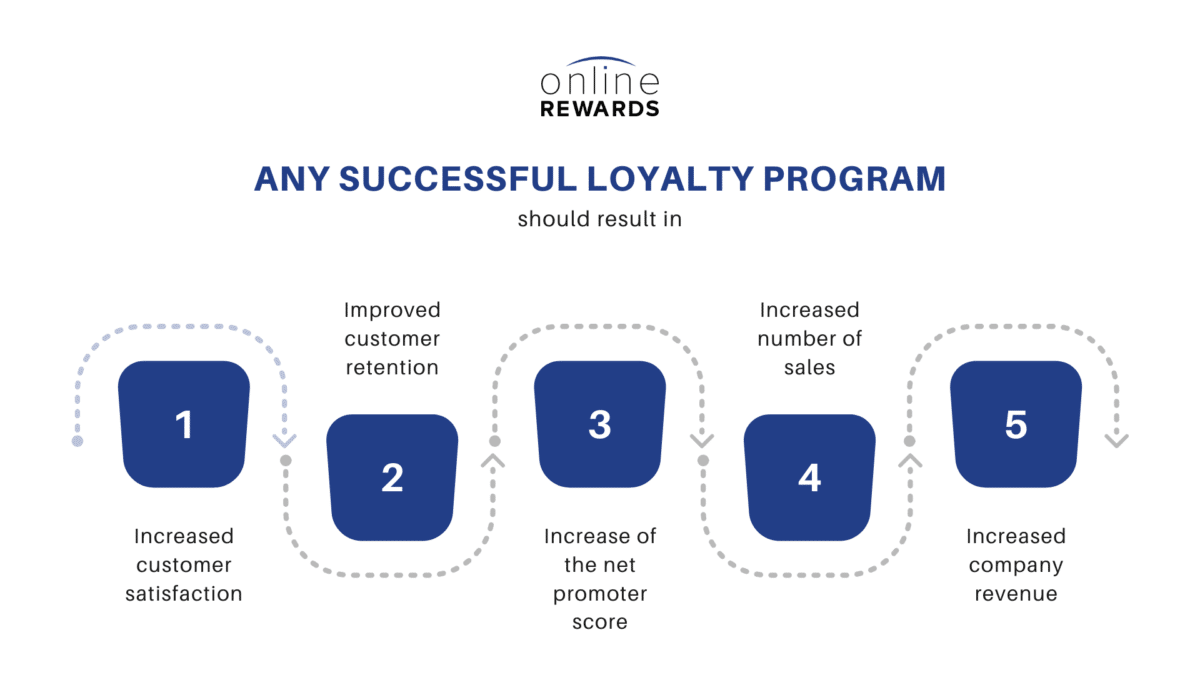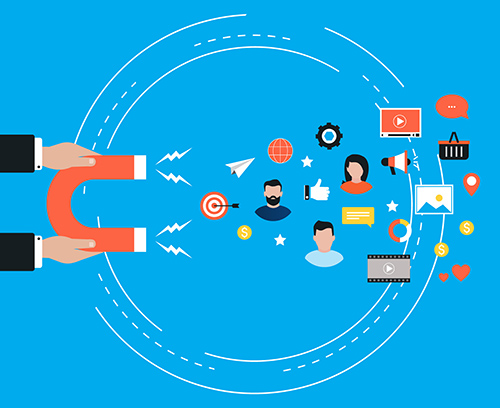Fresh Ideas You Can Implement Right Away
B2B and B2C are the two main ways that businesses need to sell and market their products or services.
A business can be both B2B and B2C. For example, Amazon and Apple act as B2B and B2C at the same time because the customers buy from them for their personal use as well as for their companies at a large scale. Furthermore, many B2C companies nowadays are building strategies to break into B2B markets.
What are B2B Customer Loyalty Programs?
B2B stands for business to business and is defined as the process of selling products to other businesses. B2B customer loyalty programs are quite complicated as they are concerned with the retention of other businesses. B2B loyalty programs are more valuable in getting direct benefits that accrue from the loyalty of the business.
What are B2C Customer Loyalty Programs?
B2C stands for business to consumer and is defined as the process of selling products to customers directly. B2C loyalty programs are very effective to engage, enhance, reward, and retain the customers as well as grow a large customer base. Business-to-consumer markets work more on emotions. People are more interested in the benefits of the product and want the marketers to tell how their product or services will help them derive benefits personally. B2C loyalty programs have emotional commercials, billboard campaigns and so on, all in a bid to get the attention of the customers.
The Main Difference Between B2C and B2B Customer Loyalty Programs
Although B2B and B2C loyalty programs have the same goal of retaining customers and ensuring their loyalty, there are some distinct differences:
- B2B loyalty programs tend to be on a smaller scale while B2C loyalty programs deal with larger numbers.
- In B2B, the decision of purchasing is often made by a group or committee, and purchases are larger both in cost and number as an entire group of people will use the product. This is not the case in B2C as consumers will typically make a unilateral decision to buy a product, and will use it by themselves or within a family. It is harder to have an impact on a group or committee than it is on a single individual.
- In a B2B loyalty program, the decisions are based on economic calculations, as purchases are made to improve the competitiveness of a business, help employees interact and communicate better, upgrade hardware, and various other business-driven reasons. However, in B2C, the decisions are often made emotionally and based on how a product or brand makes a person feel.
- A B2B loyalty program requires additional communication with recipients when compared to B2C loyalty programs.
- Transactions are faster in a B2C loyalty program (as opposed to B2B) which usually takes a longer amount of time.
- In B2B loyalty programs, companies have to develop strong relationships with clients to generate opportunities. In
- B2C loyalty programs, it is not uncommon for the sellers to have hundreds or thousands of potential customers.

What do successful B2B and B2C loyalty programs have in common
According to Harvard Business Review, simplicity, and convenience is the ultimate way to encourage customer loyalty. This is a nice statement, but how can it be applied in practice?? The following are components that will help you implement or modify your loyalty program (B2B or B2C) to be both simple and convenient, and therefore, more effective.
Understanding of consumer needs
A deep understanding of consumer needs is based not only on their wishes and goals, but also includes understanding their socio-demographic profiles, cultural background, role in decision-making, and behavioral data.
Point-based rewards system
The point-based system meets two key requirements of any modern consumer: The immediacy of gratification and flexibility. Albeit virtual, points are perceived as asset participants are acquiring in their personal space (user account). Flexibility means that participants can choose the most appropriate reward for a particular moment, whether it is a discount coupon or a nice product from a rewards catalog.
Relevant and timely communication
You want to make sure that participants of your loyalty program can clearly understand, gather, and obtain information in a way that is most convenient for them: website, SMS, email, or phone. Information should be delivered as quickly as possible.
Integration is a must
Integrating a reward program into all website touchpoints will not only simplify its utilization but also improve brand loyalty. This will increase the number of interactions with your brand and help to build and maintain strong positive bonds.
Mobile-first approach
Today, mobile phones are the most convenient points of access to any rewards system. That’s why the interface of your loyalty program must be mobile-friendly. All functions starting from document uploads to redeeming rewards should be intuitive and stable.

3 brief expert tips
Tip #1
B2B companies have to engage with many different client representatives who are not necessarily product end-users. All of them have a different motivation to stay loyal to a particular supplier. That’s why it’s crucial to segment your loyalty program depending on your buyer and user personas.
Tip #2
As a B2B company, you can successfully use the personalized B2C incentive strategy to reward two types of decision-makers:
- Individuals that have two roles: Product Buyer and Product User
- Just product user
If the decision-maker interacts with your company only for purchasing, company discounts or competitive pricing are likely to be a stronger motivator than any other strategy.
Tip #3
Typical elements of a B2B loyalty program that had proven to be successful include:
- Tools enabling targeted communications
- Training incentives
- Tiered incentives offering monetary and non-monetary rewards
- Referral programs
- Co-marketing activities
- Transaction-based discounts
The exact mix of rewards and incentives will differ depending on a sphere of business, available budget, and other resources held by the company.
Need more information on customer loyalty programs? Check out this page.

